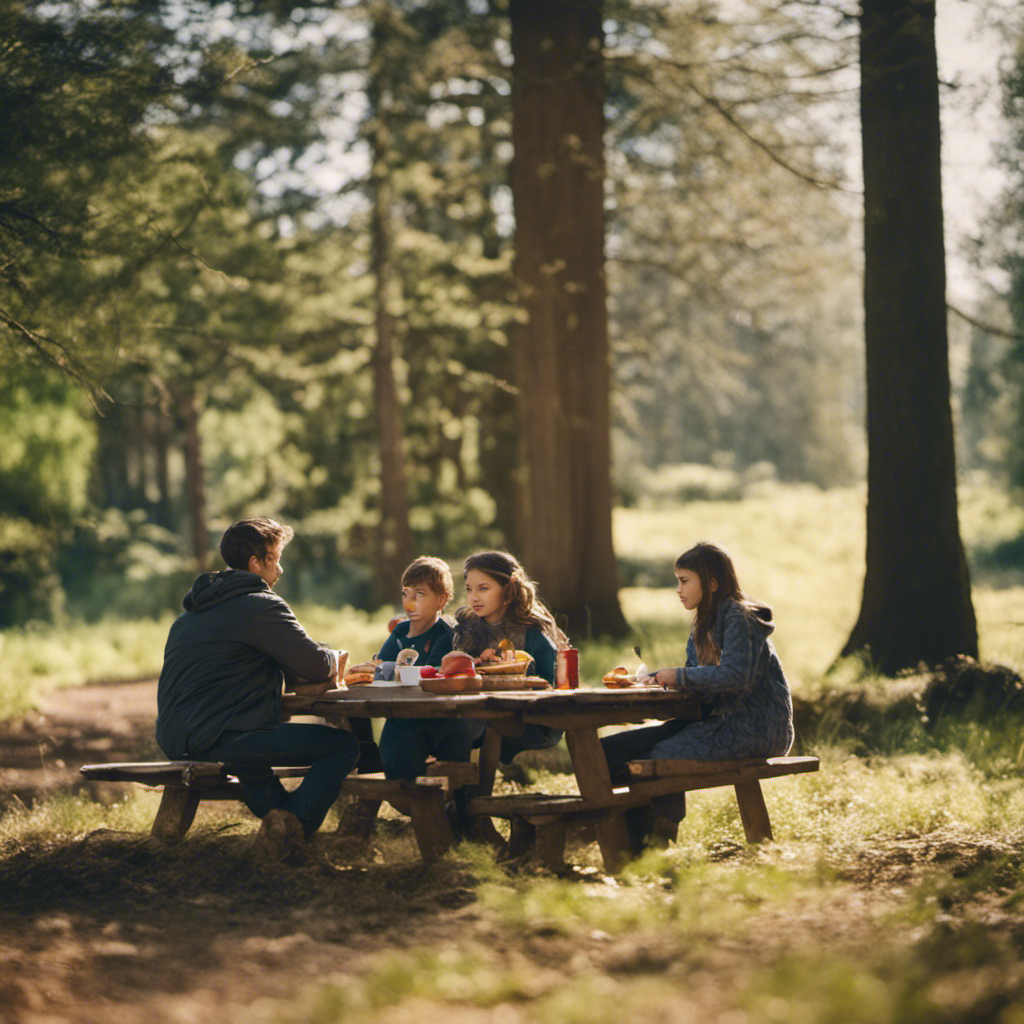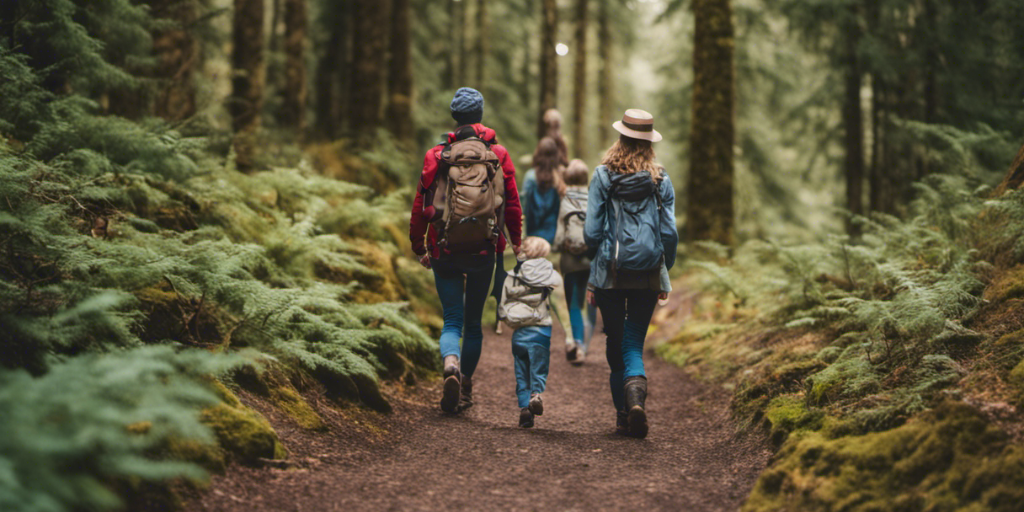Portland is known as one of the most outdoorsy cities in the U.S., with over 1,000 miles of hiking trails conveniently located near the city. Whether you’re looking for a short stroll or a full-day trek, the Portland area provides incredible natural scenery and diverse ecosystems to explore on foot.
Forest Park Trail Network
Spanning over 5,000 acres within Portland’s city limits lies Forest Park, home to an immense network of more than 80 miles of hiking trails. From short nature walks to challenging mountain treks, the park offers incredible biodiversity and natural beauty accessible to all experience and fitness levels.
Within Forest Park’s dense forests thrive over 200 native tree and plant species. Miles of leafy canopy roads provide an excellent escape from hot summer days. Throughout seasonal changes, different blooms like trilliums, salal berries, and coastal sasquatch decorate the landscape. Along higher ridgelines, sweeping views extend for miles across the nearby coast range and downtown Portland skyline.
Top Forest Park Trail Options
An excellent introductory experience is the Lower Macleay Trail, whose gentle 3-mile loop travels beside treed creeks and includes informative nature signs. More adventure calls on the multifaceted Leif Erikson Trail, awarding hikers with lofty vistas after gaining 1,200 feet over its 7.5 rugged miles.
Those craving an epic challenge can tackle the scenic Wildwood Trail, declaring over 1,000 feet in elevation gain as it travels the park’s mountainous backcountry for ten strenuous miles. No matter the chosen path, most routes interconnect, so hikers can easily modify distance on the fly. Due to its immense scale and numerous entry points, utilizing a trail map is highly recommended to successfully navigate Forest Park’s dizzying system.
As the largest forested natural area within city limits in the U.S., Portland residents are extraordinarily fortunate to have this immense recreation backyard. Its unparalleled green space provides therapeutic mental and physical refuge for all.
Tryon Creek State Natural Area
Nestled in the hills just south of downtown Portland, Tryon Creek State Natural Area preserves over 600 acres of rare Willamette Valley ecosystem. Within this protected forest landscape flows the namesake Tryon Creek, carving out sheer sandstone gorges and nourishing dense woodlands. The tranquil creek sees its headwaters high in the Tillamook State Forest before emerging here to traverse the remaining Wildlife Refuge property.
Gorge Trail Loops
The most popular hiking route is the 3-mile Gorge Trail Loop, which follows the deepening valley and crosses Tryon Creek multiple times over footbridges. Along the way, visitors may spot winter steelhead salmon swimming upstream or resident beavers constructing their dams. From late spring through summer, trillium, columbine, and other native wildflowers splash colorful accents along the shaded paths. Less ambitious hikers can opt for a shorter 2-mile Loop option as well.
The 6-mile combined Upper and Lower Ridgeline Trails provide panoramic valley perspectives not found directly along the creek. Hikers are rewarded with breathtaking audacious canyon views after diligently gaining elevation through oak woodlands and meadows. Alongside aesthetic beauty and serenity, the area plays a vital role in preserving rare Oregon white oak habitat and coastal Coho salmon runs.
Silver Falls State Park
Located just east of Salem in the Siskiyou Mountains, Silver Falls State Park holds some of the most magnificent waterfalls in the Pacific Northwest. Within the over 8,000-acre natural area flow nine incredible waterfalls, with the tallest reaching a towering 177 feet high. The park gains much of its water volume from Trail Creek and its many tributaries.
Trail of Ten Falls Loop
By far, the most renowned hiking route is the Trail of Ten Falls loop. Spanning just over 7 miles, it allows visitors to take in each waterfall up close along the way. Hikers are treated to lush forests and varying elevations, all while catching glimpses of magnificent cascades and plunging crystalline drops. Alongside the Silver and North Fork of the Silver creek systems, roaring waterfeats like South Falls, Lower South Falls, and the namesake Silver Falls stun onlookers with their beauty and power.
While it’s possible to complete the full loop in one long day, most opt to break it into two or three shorter segments depending on physical ability and time available. Be sure to bring plenty of water, as the springs and waterfalls keep the environment perpetually damp. Video cameras are encouraged for capturing the magic of these incredible natural wonders.
With picnic areas, educational programs, and campsites available, visitors to Silver Falls boost local tourism. However, they also aid in protecting this conservation treasure through use of park entrance fees. Whether enjoying a casual day stroll through the Big Tree Trail or tackling the entire Ten Falls trek, this Oregon park offers unparalleled scenic rewards protecting the state’s most prized water features.
Plan Ahead and Be Prepared
Portland area hiking trails offer enticing beauty and exercise, but hikers still need to plan adequately for safety, especially if you are a beginner. Here are a few essential tips for hiking beginners: 
Hiking Footwear
Proper footwear is crucial, so invest in a supportive, broken-in pair of hiking boots or shoes. Uneven or slippery surfaces can lead to injury if your footwear isn’t up for the challenge. Bring along a day pack to carry essentials hands-free like water, snacks, a jacket or rain gear, and a map. Always pack at least one liter of water per person regardless of hike length.
Bring Water
Staying hydrated and nourished helps maximize enjoyment and safety. Filling up on complex carbs before and after exercise also aids recovery. On the trail, consume a healthy mix of carbs, protein, and fats to maintain energy levels. Nut-based trail mixes paired with dried fruit are easy lightweight options. The bottom line is, at a minimum, always have plenty of water with you, always!
Check the Weather
While exploring Oregon’s lush natural locales, hikers could come across diverse regional wildlife. Making noise on trails helps avoid startling animals. Bears frequently forage wooded areas for food. Likewise, mountain lions and coyotes inhabit certain regions. Thus, carefully following posted directions on safe food storage is important. Likewise, never sprint when an animal is seen.
During peak periods, bear spray should be carried for protection, just in case. However, from a distance, all creatures deserve wide space. Therefore, with simple safety steps, Oregon’s captivating outdoors allows enjoyment near indigenous plant and animal life. In addition, being aware of your surroundings can aid quick reaction if needed.
Watch for Wildlife
While exploring Oregon’s lush natural locales, hikers could come across diverse regional wildlife. Making noise on trails can help avoid startling animals. Bears, mountain lions, and coyotes inhabit certain areas, thus carefully following posted directions for safely storing food is important. Likewise, never sprint when an animal is seen. During peak periods, bear spray should be carried for protection, just in case. From afar, all creatures deserve wide space. Therefore, with simple safety steps, Oregon’s captivating outdoors allows enjoyment near indigenous plant and animal life.
Whether you’re just starting out or an experienced hiker, Portland’s extensive trail systems provide the perfect opportunity to enjoy the outdoors. For beginners, focusing on fundamentals like having proper footwear, bringing plenty of water, checking weather forecasts, and starting with easier trails will help ensure safe and enjoyable hiking experiences. With so many options close by, Portland truly is a paradise for those who love exploring nature on foot.








